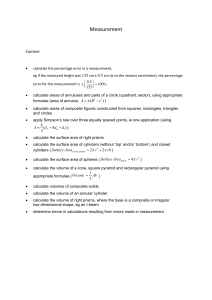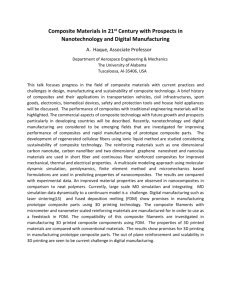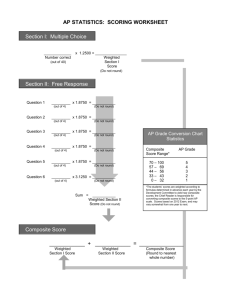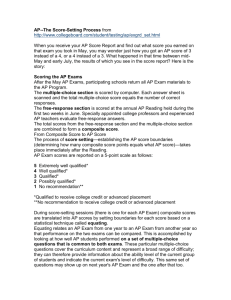ImPACT Test Info - Lyndhurst School District
advertisement
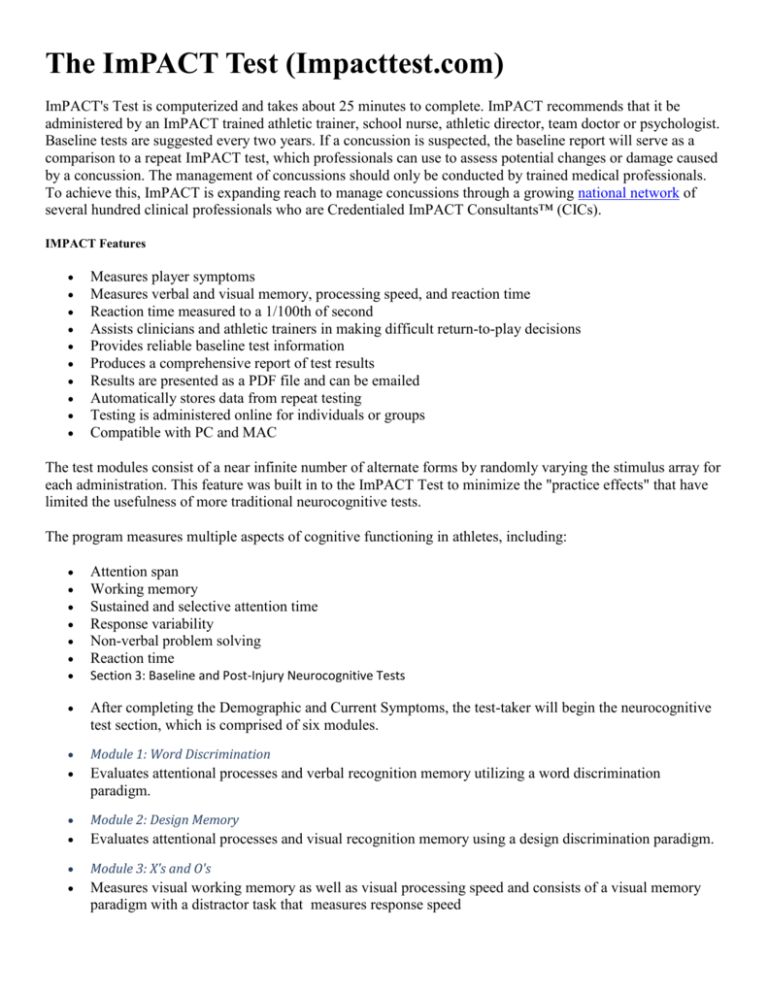
The ImPACT Test (Impacttest.com) ImPACT's Test is computerized and takes about 25 minutes to complete. ImPACT recommends that it be administered by an ImPACT trained athletic trainer, school nurse, athletic director, team doctor or psychologist. Baseline tests are suggested every two years. If a concussion is suspected, the baseline report will serve as a comparison to a repeat ImPACT test, which professionals can use to assess potential changes or damage caused by a concussion. The management of concussions should only be conducted by trained medical professionals. To achieve this, ImPACT is expanding reach to manage concussions through a growing national network of several hundred clinical professionals who are Credentialed ImPACT Consultants™ (CICs). IMPACT Features Measures player symptoms Measures verbal and visual memory, processing speed, and reaction time Reaction time measured to a 1/100th of second Assists clinicians and athletic trainers in making difficult return-to-play decisions Provides reliable baseline test information Produces a comprehensive report of test results Results are presented as a PDF file and can be emailed Automatically stores data from repeat testing Testing is administered online for individuals or groups Compatible with PC and MAC The test modules consist of a near infinite number of alternate forms by randomly varying the stimulus array for each administration. This feature was built in to the ImPACT Test to minimize the "practice effects" that have limited the usefulness of more traditional neurocognitive tests. The program measures multiple aspects of cognitive functioning in athletes, including: Attention span Working memory Sustained and selective attention time Response variability Non-verbal problem solving Reaction time After completing the Demographic and Current Symptoms, the test-taker will begin the neurocognitive test section, which is comprised of six modules. Module 1: Word Discrimination Evaluates attentional processes and verbal recognition memory utilizing a word discrimination paradigm. Module 2: Design Memory Evaluates attentional processes and visual recognition memory using a design discrimination paradigm. Module 3: X's and O's Measures visual working memory as well as visual processing speed and consists of a visual memory paradigm with a distractor task that measures response speed Section 3: Baseline and Post-Injury Neurocognitive Tests Module 4: Symbol Matching Evaluates visual processing speed, learning and memory. Module 5: Color Match Represents a choice reaction time task and also measures impulse control and response inhibition. Module 6: Three Letter Memory Measures working memory and visual-motor response speed. Section 4: Graphic Display of ImPACT Test Scores There are five ImPACT Test scores calculated from the neuropsychological tests administered, and each is displayed graphically: Composite 1: Verbal Memory Composite This score is comprised of the average of the following scores: Total memory percent correct Symbol match (total correct hidden symbols) Three letters (total percent of total letters correct) A higher score indicates better performance on the Verbal Memory Composite. Composite 2: Visual Memory Composite This score is comprised of the average of the following scores: Design memory (total percent correct score) X's and O's (total correct memory score) A higher score indicates better performance on the Visual Memory Composite. Composite 3: Processing Speed Composite This score is comprised of the average of the following scores: X's and O's (total correct (interference)) Three-letters (average counted correctly) A higher score indicates better performance on the Processing Speed Composite. Composite 4: Reaction Time Composite This score is comprised of the average of the following scores: X's and O's (average correct RT (interference)) Symbol match (average correct RT/3) Color match (average correct RT) A lower score indicates better performance on the Reaction Time Composite. Composite 5: Impulse Control Composite This score is comprised of the average of the following scores: X's and O's (total incorrect (interference)) Color match (total commissions) A lower score indicates better performance on the Impulse Control composite. Total Symptom Composite This score represents the total for all 22 symptom descriptors. A lower score indicates fewer endorsed symptoms by the test-taker. This series of graphs allows direct comparison of test performance in these core areas across multiple testing sessions. The composite scores were constructed to provide summary information regarding different broad cognitive domains. Thus far, ImPACT's studies have indicated the verbal memory, visual memory, processing speed, reaction time and symptom scores assist in making a determination between concussed and non-injured individuals.

